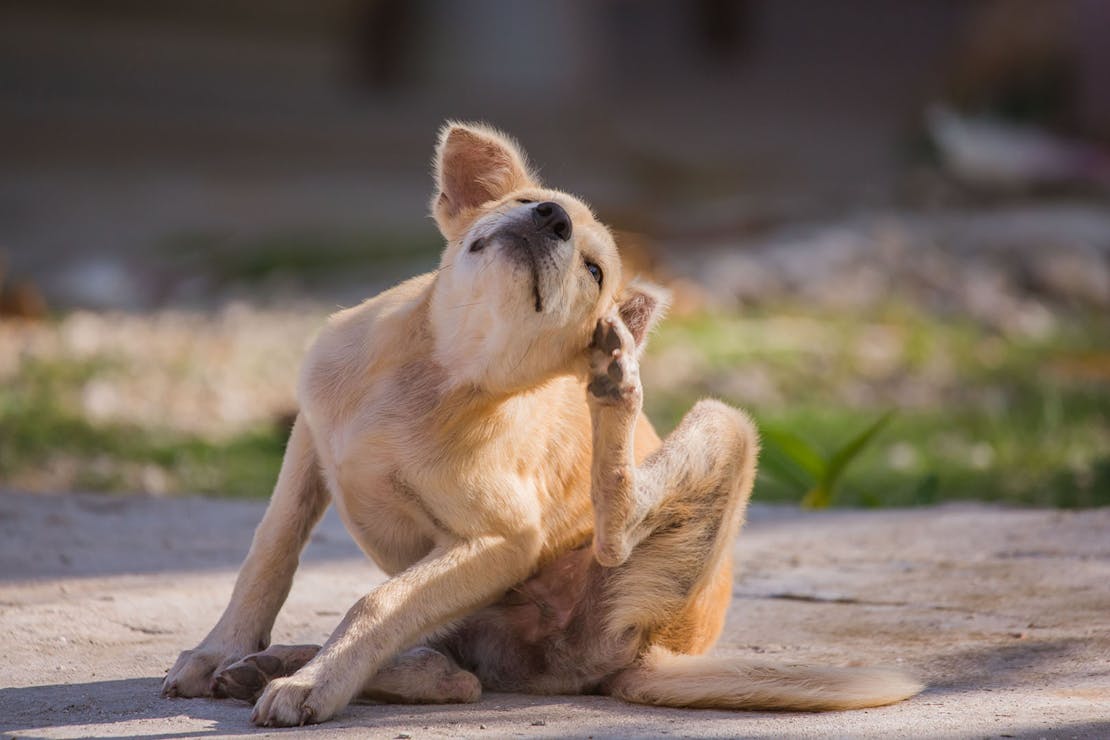
How can I prevent my dog from getting fleas?
How can I prevent my dog from getting fleas?
Fleas, those troublesome tiny pests, wreak havoc on both dogs and humans alike. In this article, we aim to enlighten you about their life cycle and effective prevention methods.
Understanding the flea’s life cycle is essential in combating and avoiding infestations. So time to delve into all the information to empower you in the battle against these persistent nuisances.
Why are fleas so prevalent?
Well you may have noticed that in recent years we have seen an increase in flea infestations and that's due to the weather conditions. Fleas thrive in warm and humid conditions and in recent years we’ve had humid weather for a long time meaning the life cycle of the flea has escalated meaning they go from egg to adult a lot faster. Therefore people have struggled to treat their pets and homes at a fast rate, in turn meaning our beloved dogs have spread them around one another.
How quickly do fleas multiply?
On average fleas lay up to 50 eggs a day meaning they are remarkable breeders. In ideal conditions the life cycle of a flea is 14 days from egg to adult, which means quick treatment is essential for getting rid of them.
So let’s talk about their life cycle and how it all works.
Egg - Shed by the female into the environment
Larva - Egg hatches into Larvae
Pupa - Larvas form into Pupas
Adult - Pupas hatch into adults
A flea will find a host whether that be a human or an animal and takes blood from them and begins to lay eggs either into the fur or the surrounding environment such as your bed or sofa. Therefore fleas can spread to humans too. Depending on the condition of the environment such as humidity or temperature the eggs will hatch between 1 to 10 days.
When the eggs hatch they enter the larva stage where they feed off blood and faeces. Larvaes are free moving which is essential for them to find food and grow.
Within 5 to 20 days the larvae will make a cocoon and turn into the pupa stage. The negative about them being in the cocoon is they are protected from flea sprays and treatments until they turn into a flea.
They will not come out of the cocoon until they know that there is a host for them to feed from. They will detect movement or body heat to determine this.
As soon as the female emerges from the cocoon it will feed off the host and begin to mate and lay eggs. Each female can lay up to 2,000 eggs.
The cycle continues and they reproduce at a very speedy rate.
Given the rapid reproduction rate of fleas, it's crucial to address their presence promptly and efficiently.
How do I prevent fleas?
We often get this question, and it's incredibly important to protect your dog from fleas. These pesky pests can cause skin irritations, weight loss, dehydrations, and various other harmful symptoms in your furry companion.
Using treatments and other remedies will cause the fleas not to be attracted to you or your dog. It’s just as important to protect yourself when walking in long grass or places where they live as you can carry fleas into your home on your clothes.
Ways to prevent fleas are -
Use a preventative treatment such as a spot on - This should be applied on a regular basis. Each brand is different so make sure you are checking but most products need to be reapplied every 4-6 weeks. The idea of a spot on is if a flea comes into contact with your dog and they try to feed from them, the treatment will be in your dog's bloodstream and as the flea bites, it will kill them.
Flea collars - These are a great alternative to spot on treatments and works in a similar way. They usually get to work within a week and typically last for up to 4 months before needing to be replaced.
Flea shampoo - Bath your dog regularly in a flea shampoo that repels them.
Flea sprays - You can get preventative flea sprays that you spray on your dog before you go outside, these can help to repel them.
Check your dog - With a flea comb or any brush check on a regular basis if your dog has them. Stay vigilant and treat as soon as possible
Natural remedies - Apple cider vinegar is known to have properties that repel fleas. You can either dilute with water and spray onto your dog or feed it into their diet. Other natural remedies like lavender, citronella and cedar wood are also known to have properties that repel fleas. Dilute with water and spray onto your dog. Be careful because some oils are toxic to dogs if not diluted properly or used correctly.
Dogs vary, so there isn't a universal solution to prevent flea infestations. Often, it's more effective to employ multiple methods to protect your dog against fleas.
From Olivia.
